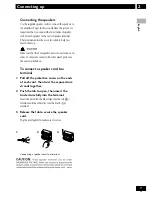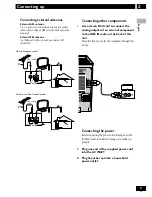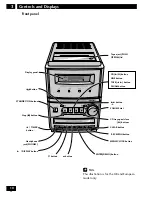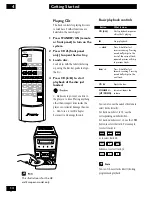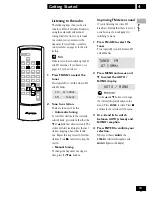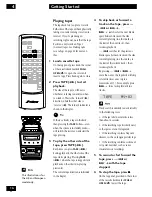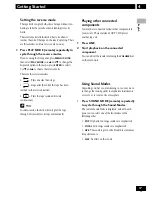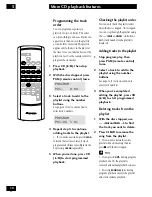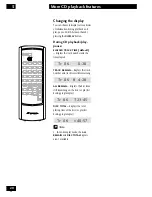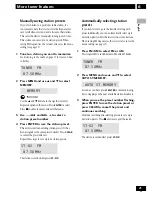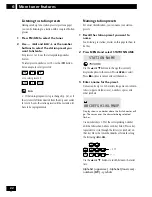
8
En
Connecting up
2
Note
If you plan to mount the AM antenna to a wall or other
surface, secure the stand with screws (
fig. C
) before
clipping the loop to the stand. Make sure the reception is
clear.
5 Place the AM antenna on a flat surface
and point in the direction giving the best
reception.
Avoid placing near computers, television sets or other
electrical appliances and do not let it come into contact
with metal objects.
6 Connect the FM wire antenna in the same
way as the AM loop antenna.
For best results, extend the FM antenna fully and fix to a
wall or door frame. Don’t drape loosely or leave coiled
up. You can use thumbtacks to hold the antenna arms
extended widely.
The supplied FM antenna is a simple means of receiving
FM stations; using a dedicated, outdoor FM antenna will
usually give you better reception and sound quality. See
Connecting external antennas
on the next page for
connection details.
The signal ground (
H
) is designed to reduce noise
that occurs when an antenna is connected. It is not an
electrical safety ground.
1 Pull off the protective shields of both AM
antenna wires.
2 Push open the tabs, then insert one wire
fully into each terminal.
3 Release the tabs to secure the AM
antenna wires.
4 Fix the AM loop antenna to the attached
stand.
To fix the stand to the antenna, bend in the direction
indicated by the arrow (
fig. A
) then clip the loop onto
the stand (
fig. B
).
Connecting the radio antennas
Connecting the supplied antennas will allow you to
listen to both AM and FM radio broadcasts. If you find
that reception quality is poor, an outdoor antenna
should give you better sound quality—see
Connecting
external antennas
below for more on how to do this.
Before making or changing antenna connections, make
sure that the power is switched off and the unit
disconnected from the wall power outlet.
fig. A
fig. B
fig. C
1
3
2
Australia and New Zealand model.
Summary of Contents for X-NM1
Page 1: ......
Page 78: ...40 Fr Additional Information 9 ...







